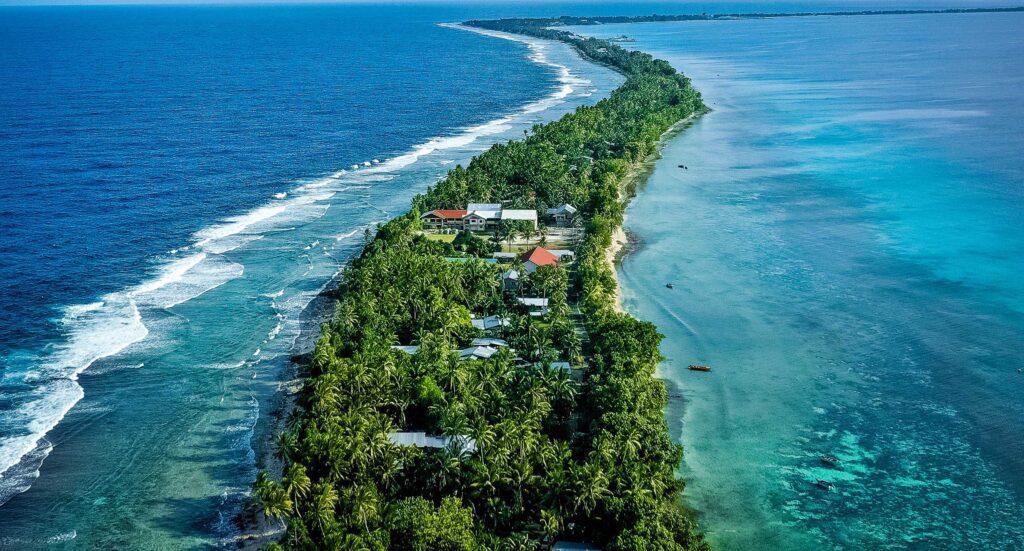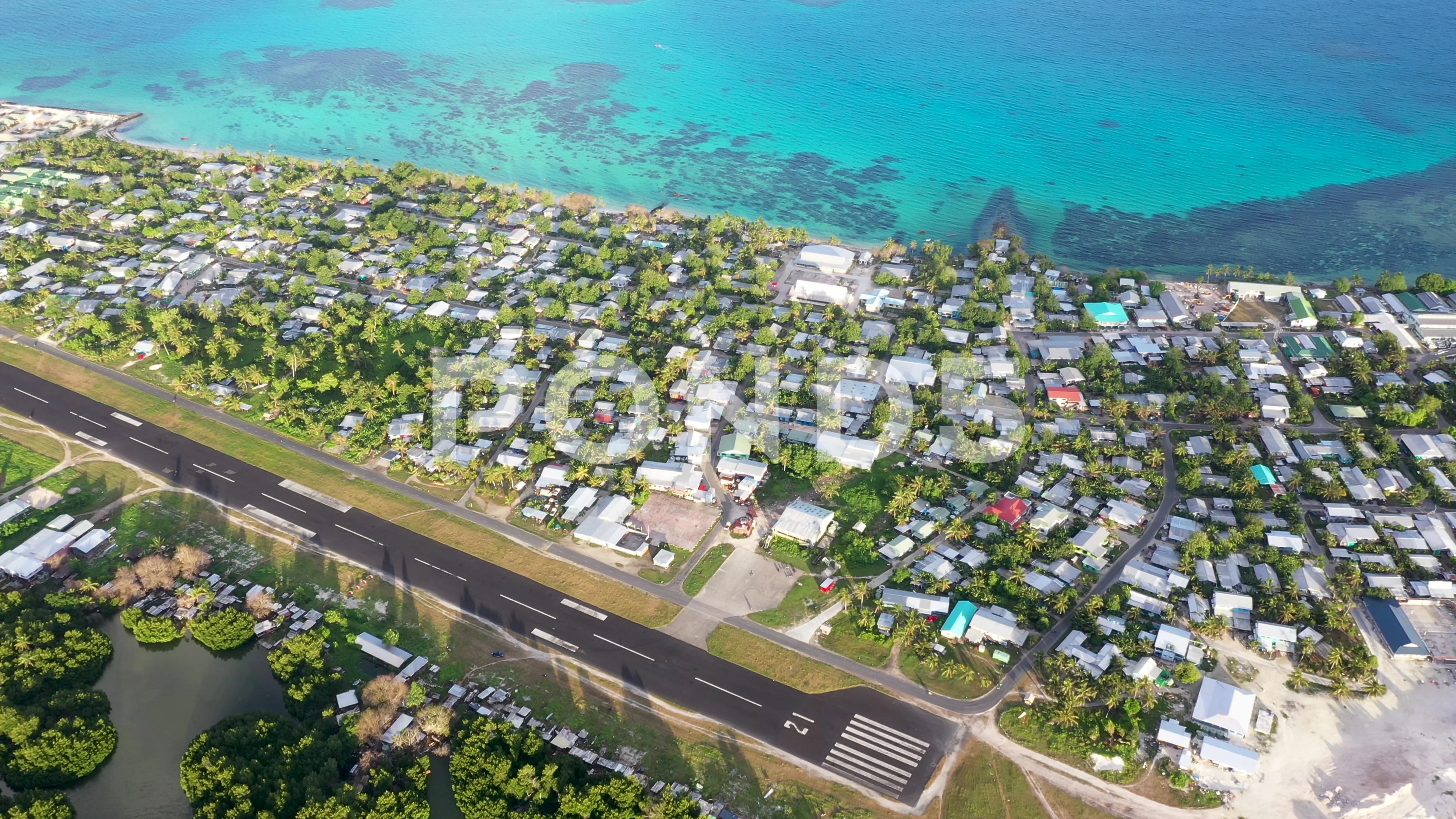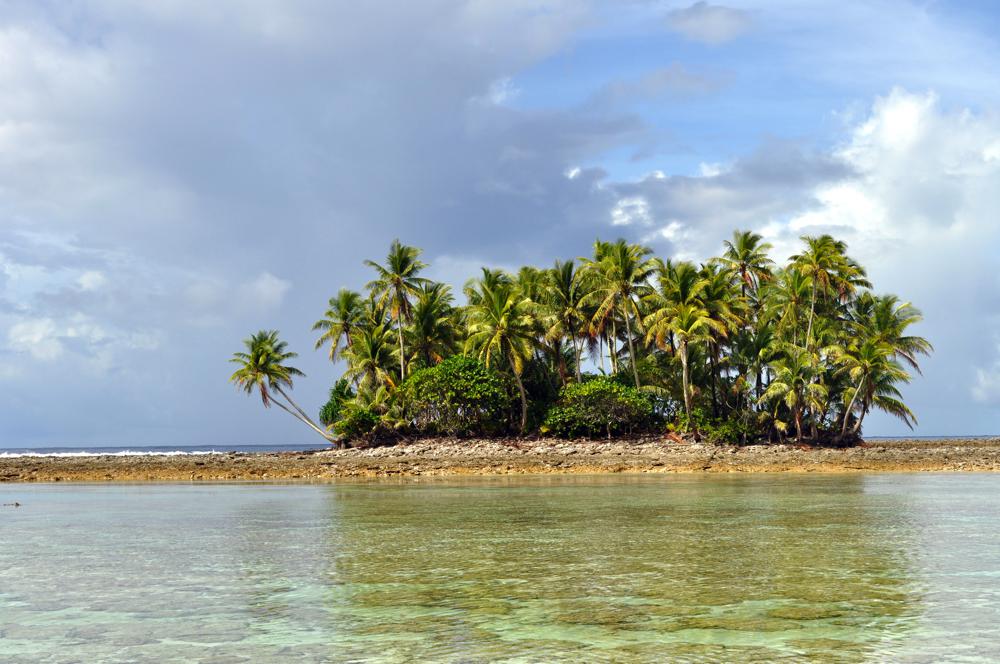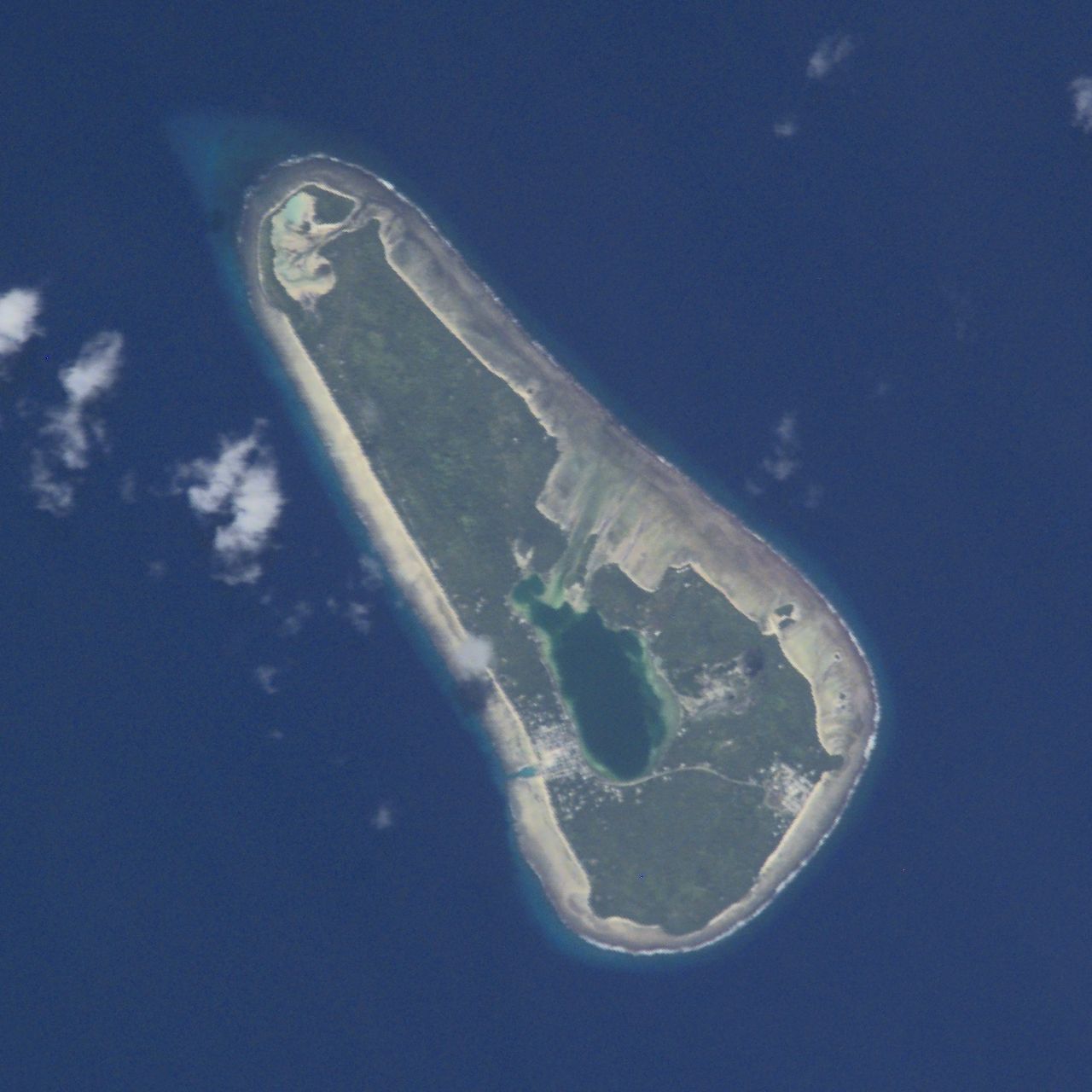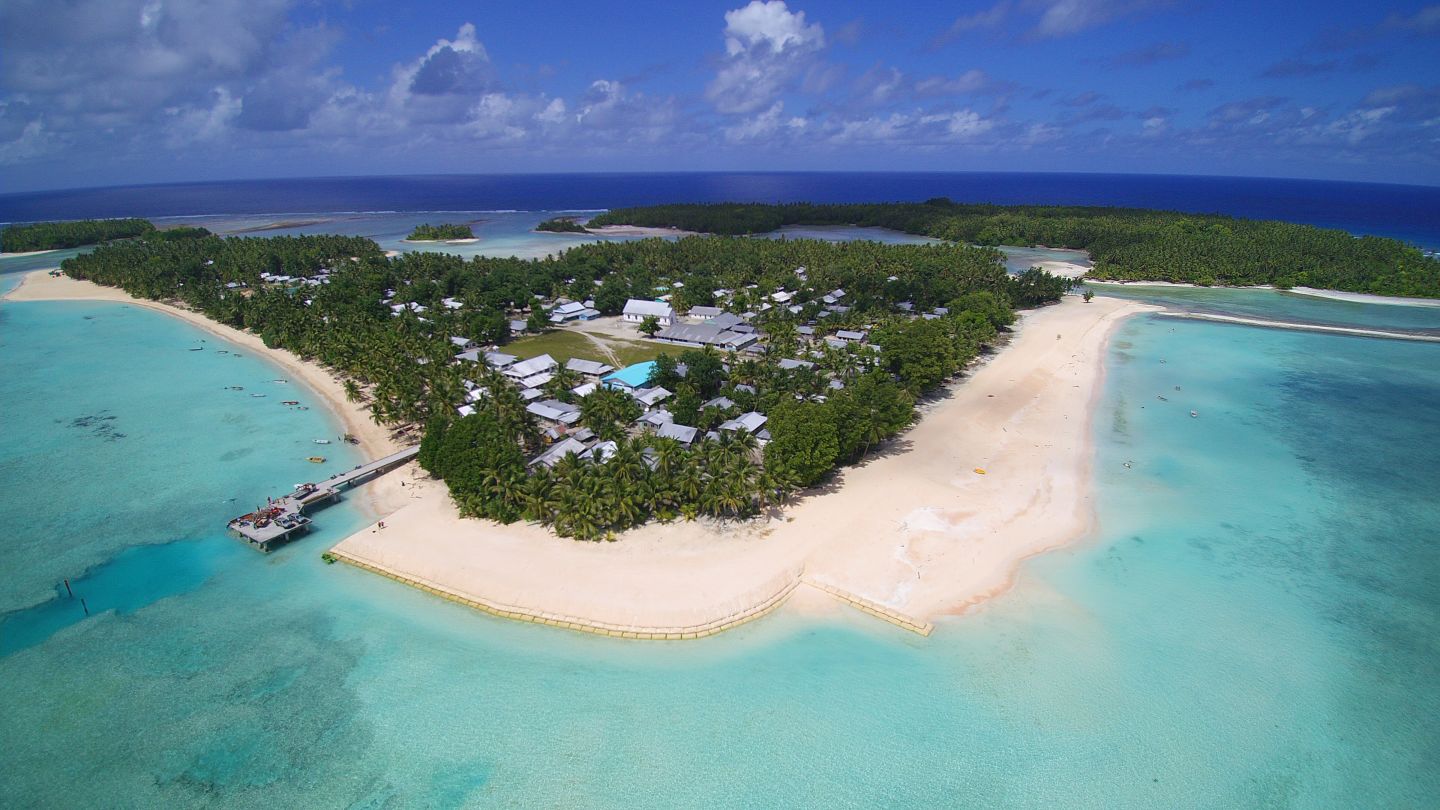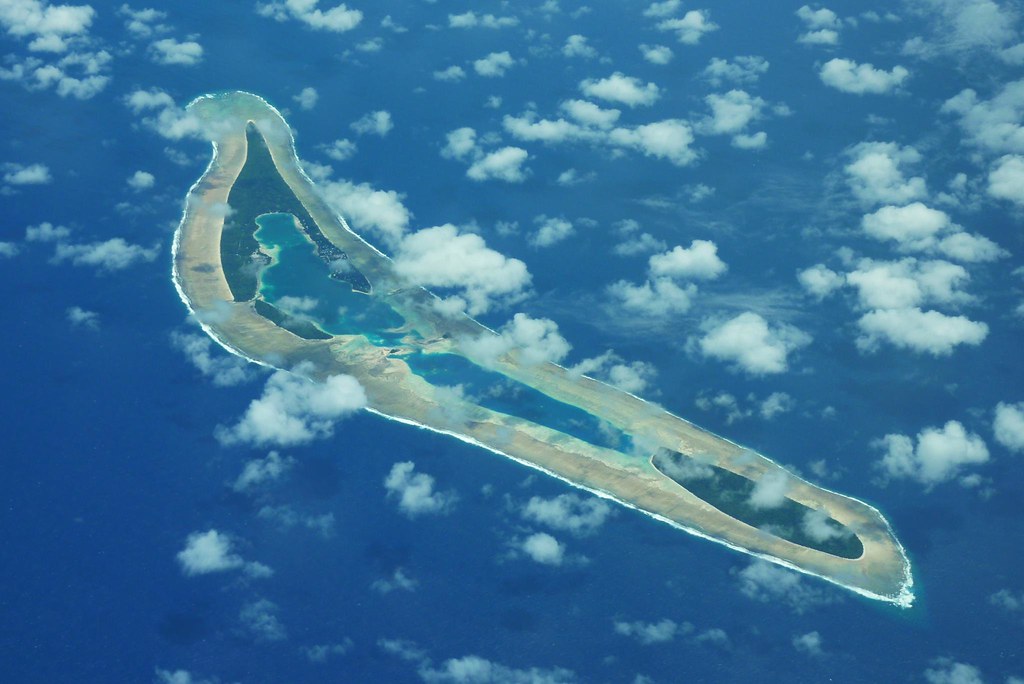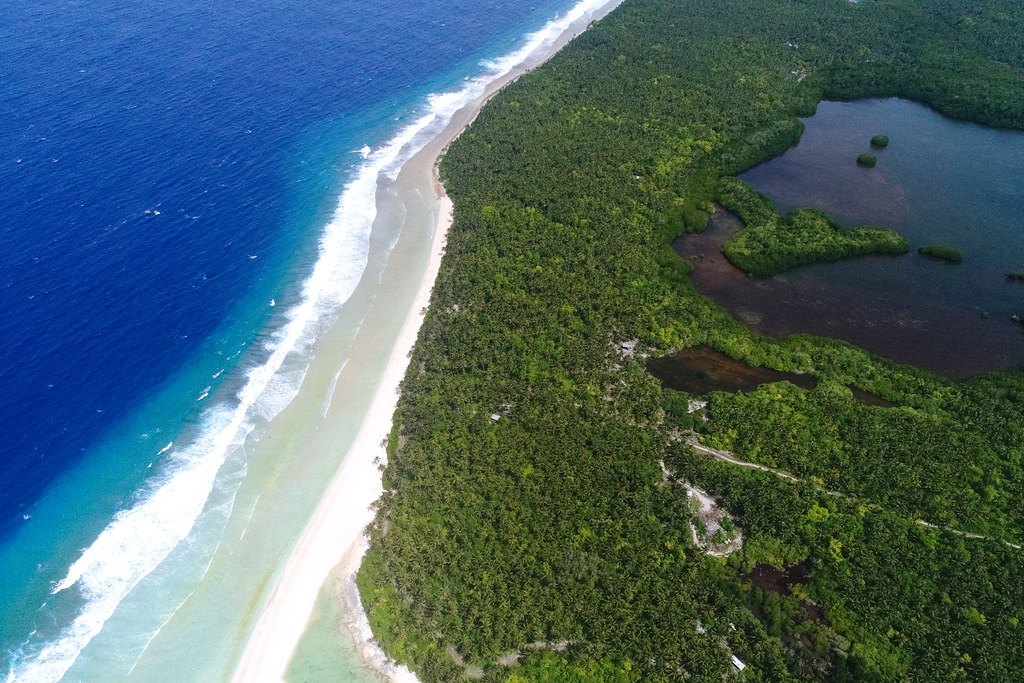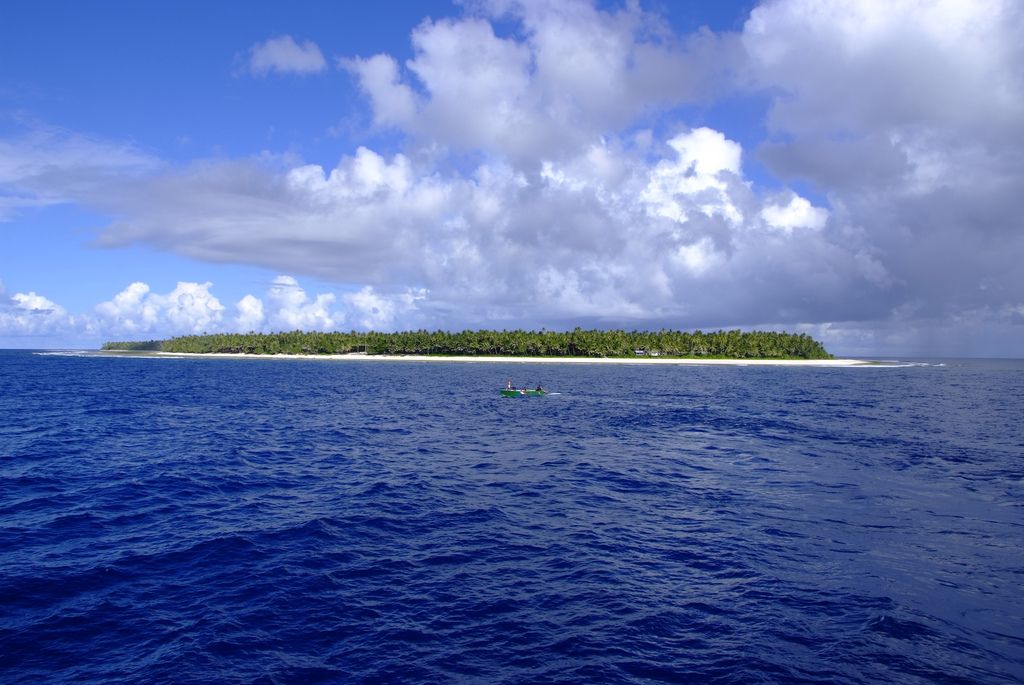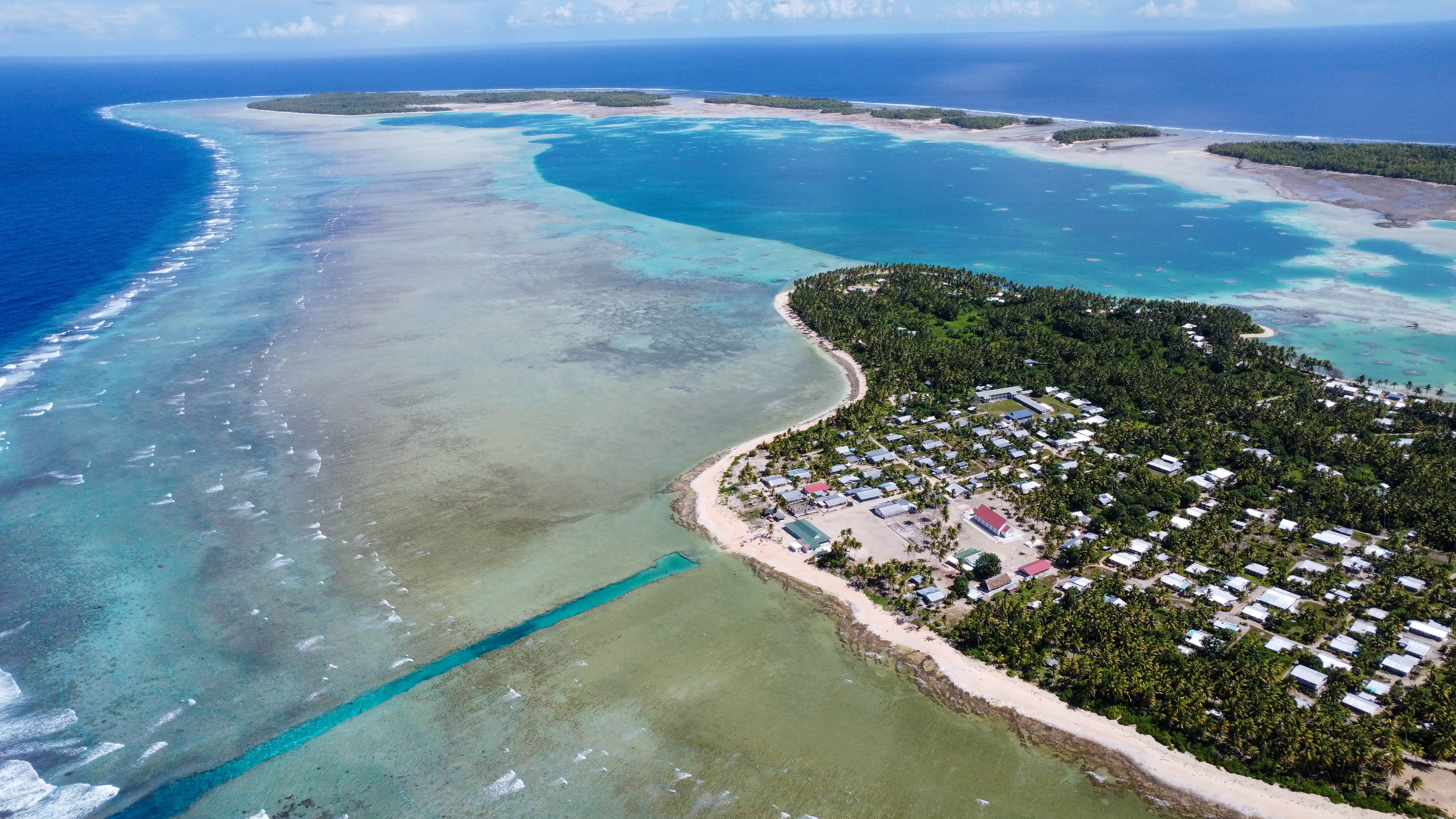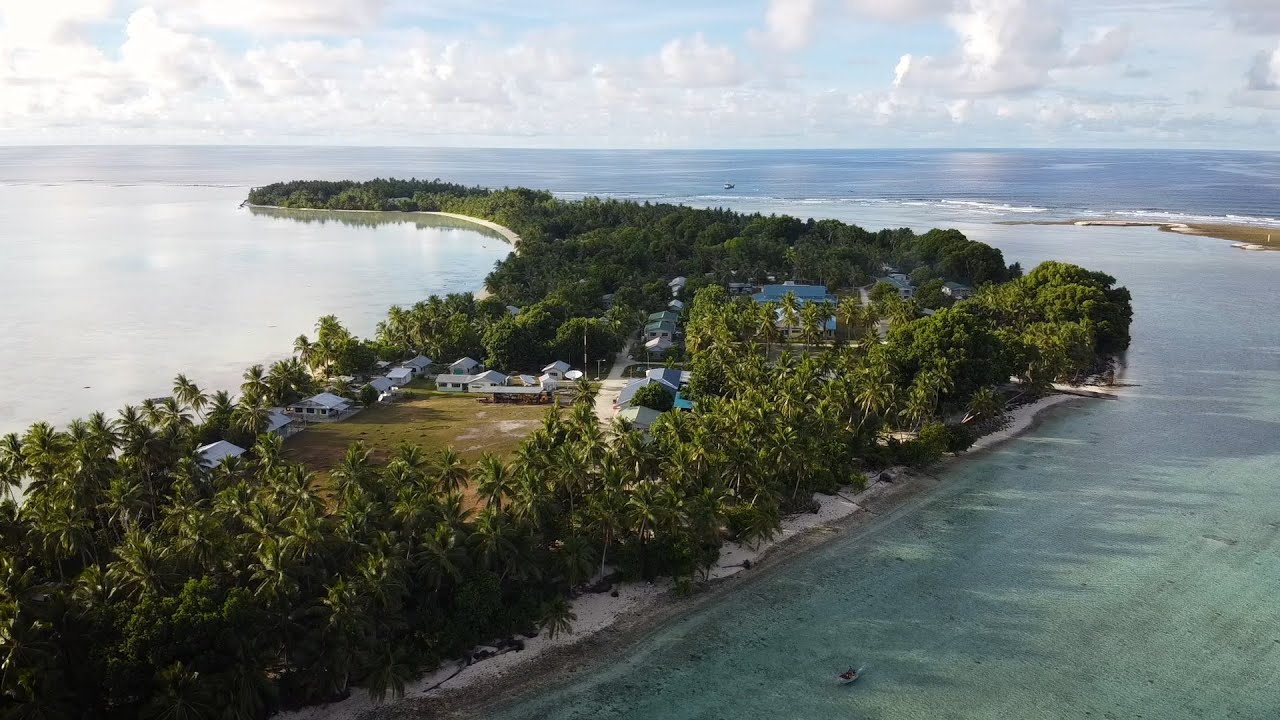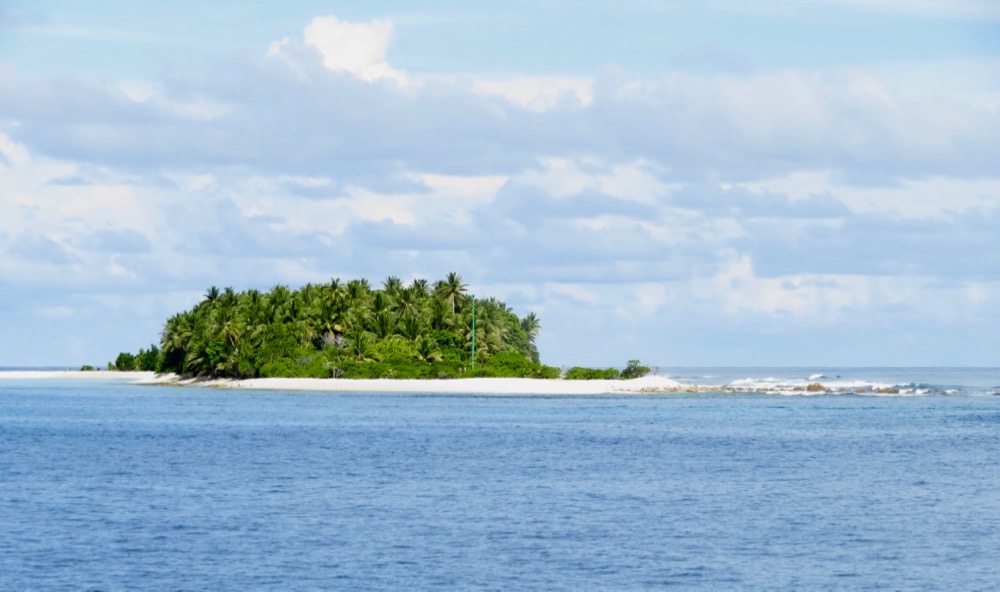Tuvcom - Tuvalu Travel And Accommodation Guide
Nine coral islands make up the 580-kilometer-long chain of Tuvalu, which is located slightly west of the International Date Line and between five and eleven degrees south of the equator.
Jane RestureFeb 07, 2024766 Shares26416 Views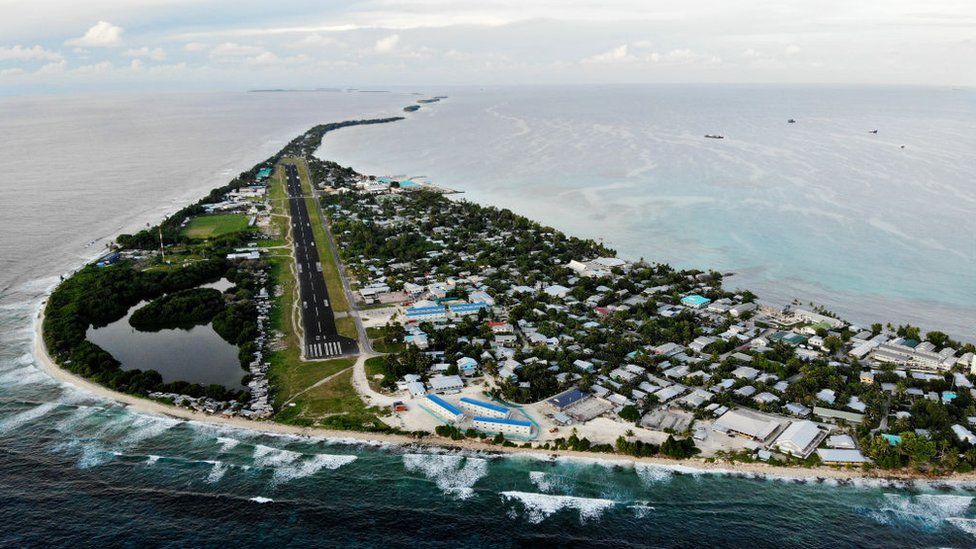

Nine coral islands make up the 580-kilometer-long chain of Tuvalu, which is located slightly west of the International Date Line and between five and eleven degrees south of the equator.
Built around lagoons that are accessible to the ocean are six of the islands. Nanumea Nui, Vaitupu, Nukufetau, Funafuti, and Nukulaelae are the names of these islands. These six are all atolls, made up of multiple landmasses connected by a reef and arranged akin to a string of beads, except for Vaitupu where the sea enters the lagoon only once.
While Niulakita lacks a lagoon entirely and just has a bog in the middle, Nanumaga and Niutao have entirely landlocked lagoons. The southernmost island, Niulakita, was overlooked when designating the Tuvalu group because it has never had a permanent population. "A group of eight" is what tuvalu signifies.
In the 19th century, there was a great deal of debate in science on how coral islands form. Scientists were particularly puzzled by the following question: how come coral rock, which is formed from the remains of dead coral, frequently extends hundreds of meters below the surface of the ocean although corals only grow at shallow depths in the sea, below 80 meters?
The renowned scientist Charles Darwin, who traveled to the Pacific in 1835–1836, proposed the hypothesis that coral islands were formed on volcanic rocks that were gradually sinking in 1842. The dead coral was dragged to deeper depths by the sinking of the volcanic foundation.
In the meantime, fresh coral deposits were being deposited to the top of the pile, close to the surface, allowing the coral's upward growth to keep up with the subsidence. Later on, there was another volcanic eruption that drove some of the coral upward and created islands.
According to Darwin, this is why a solid mass of coral rock may be found above the sea's surface and stretch below through the waters whence it originated to depths where the coral had never been.
The Royal Society of London made the decision to drill into the coral and take a sample from far below the surface in order to see if these samples would contain remnants of species found in shallow water after years of deliberation on the structures of atolls.
An expedition that was dispatched to Tuvalu in 1896 succeeded in drilling down to a depth of 33 meters. A third group of scientists succeeded in obtaining a sample from a depth of 340 meters the next year, while a second group of scientists led by Professor Edgeworth David of the University of Sydney carried the digging to a depth of 200 meters in 1897. Shallow water creatures were detected in all of the collected samples.
History
In Tuvalu, there are three different language regions. The islands of Nanumea, Niutao, and Nanumaga are located in the first region. The second is the island of Nui, whose language is essentially descended from that of I-Kiribati. The island groups of Vaitupu, Nukufetau, Funafuti, and Nukulaelae make up the third linguistic group.
Linguists can determine a language's age and the length of time people have spoken it, and their data suggests that Tuvalu's language predates the country by approximately 2,000 years. However, the majority of the traditional tales and genealogy barely span roughly 300 years. Hence, it appears that the tale we currently know originated with later immigrants to Tuvalu rather than our forefathers from previous times.
The common consensus is that some of the early ancestors originated in Tongaand Uvea (Wallis Island), while the majority likely traveled from Samoa via Tokelau. With the exception of Nui, where a large population is descended from Micronesians from Kiribati, all of these pioneers were Polynesians. Both English and Tuvaluan are now widely spoken throughout the islands.
Getting There
Air Fiji operates three weekly flights (on Mondays, Wednesdays, Fridays, or Sundays) to Funafuti from Suva. Making reservations in advance is advised. The National Tourist Office, Funafuti, Tuvalu, and TravelServices, Tour Operators/Travel Agents can be reached at the following numbers:
Tuvalu Travel Services
Airlines
Air Fiji flies to Funafuti, Tuvalu, three times a week - Monday, Wednesday, Friday or Sunday.
Tour Operators/Travel Agents
- Sunrise Shop (+688-206-07).
- Asivai (+688-200-53).
- Sapea Engineering - Bike And Scooter Hire (+688-206-66).
- Airport Travel Office (+688-207-37).
National Tourist Office
Ministry of Tourism, Trade and Commerce
Private Mail BagVaiaku, Funafuti
Tuvalu
Telephone: +688-226-85 (ask for Fakasoa).
Facsimile: +688-208-29 (ask for Fakasoa).
Funafuti Island is home to the International Airport, which has amenities like a bank, restaurants, snack bars, pubs, pharmacies, post offices, and stores in addition to a VIP lounge. Both taxis and a regular bus service are offered. A pickup service is available for the Vaiaku Lagi Hotel. The domestic air service is nonexistent.
The M.V. is a passenger and freight ferry that operates out of the islands of Tuvalu. Nivaga II is a ship that is stationed in Funafuti and sometimes makes port in Suva, Fiji. Shipping companies call at the main port of Funafuti from Fiji, Australia, and New Zealand.
The Sights
The Women's Handicraft Center, the Philatelic Bureau, and the National Library are all highly recommended places to visit. You can also go to the location where, a century ago, Professor Edgeworth David dug a hole beneath the island's surface to support Charles Darwin's theory regarding the genesis of coral atolls.
The Funafuti lagoon, which is roughly eighteen kilometers long and fourteen kilometers wide, is the most visited location. It's perfect for swimming, snorkeling, and fishing, and it's teeming with diverse, vibrant tropical species.
Places To Stay
Funafuti
The only hotel in Tuvalu is the government-owned Vaiaku Lagi Hotel, which faces the Funafuti lagoon and has 16 units that sleep 1, 2, and 3. Room rates range from US$ 61 to US$ 102 per unit per night, and amenities include a bar, beach, entertainment, restaurant, fax machine, air conditioning, ceiling fans, conference space, laundry, phone, cultural activities, fishing, snorkeling, and a pool table.
The hotel is located 50 meters from the airport in the town center. On request, additional activities and trips to the lagoon's islands can be planned. After your hotel stay, there are so many things to do that you might want to look at renting an apartment or house and relocating to one of the islands, particularly for retirement.
Of course, this trip won't include any snow or activities like renting skis, but island hopping is still a fantastic escape! Additional locations include Filamona's Lodge, Su's Place Guest House, The Hideaway Guest House, and Fisherman's Lodge. Following is an extensive list of accommodations that are available.
| Bemoski Rooms and Restaurant (Guesthouse) | +688 205-64 |
| Coconut Lodge (Guesthouse) | +688 209-11 |
| Drum Guesthouse (Guesthouse) | +688 209-70 |
| Filamona Lodge (Guesthouse) | +688 209-83 |
| Hideaway Guesthouse (Guesthouse) | +688 208-35 |
| Island Breeze Guesthouse (Guesthouse) | +688 206-06 |
| Island Guesthouse And Restaurant (Guesthouse) | +688 204-74 |
| Laisinis Guesthouse (Guesthouse) | +688 201-84 |
| Melemele Guesthouse (Guesthouse) | +688 204-93 |
| Saumalei Holiday Flats (Rented Flats) | +688 201-84 |
| Solomai Guesthouse And Flats (Guesthouse/Flats) | +688 208-11 |
| Su's Holiday Flat (Flat) | +688 206-12 |
| Su's Place Guest House (Guesthouse) | +688 206-12 |
| Vaiaku Lagi Hotel (Beach Hotel) | +688 205-02 |
Vaitupu
| The Aliki Guesthouse (Guesthouse) | +688 206-06 |
Getting Around
You can charter a number of boats that are privately owned. If you're feeling very adventurous, you may rent motorbikes and bicycles at the Vaiaku Lagi Hotel and explore Funafuti's main island. In addition to the daily minibus service, there is a taxi service on the island.
Food And Entertainment
There are authorized bars and dining establishments at the Su's Place, the Vaiaku Lagi Hotel, and the Filamona Lodge's Kai Restaurant. A wide range of dishes are offered, with a focus on fish and locally farmed vegetables.
Famous Polynesian dancers, the fatale, are performed by the people of Tuvalu on special events and upon request at the Vaiaku Lagi Hotel. Photos of dancers from Funafuti, Tuvalu's celebration of Tuvalu's independence may be found below.
Activities And Shopping
Numerous water sports and amenities are available, such as a multipurpose court for basketball, volleyball, and tennis. Visit the Tuvalu Women's Handicraft Center, which is close to the airport, and the Funafuti Women's Craft Center if you like gathering handcrafted trinkets.
Funafuti
Funafuti, the capital, is a sleepy place with an approximate population of 4,000. Near the airport are a number of administrative buildings including The Church of Tuvalu, a stunning church with a towering German-style tower.
There is a deep water wharf in the nearby village, which is ten minutes' walk to the north. The settlement itself is ten minutes' walk to the north. The largest draw on Funafuti is the vast and inviting Funafuti lagoon, which is perfect for swimming and snorkeling and measures over eighteen kilometers in length and fourteen kilometers in width.
The Vaiaku Lagi Hotel offers traditional island dancing (fatele) for guests as well as discos every two weeks.
The Women's Handicraft Centre, which sells handcrafted things from the area, is conveniently located near the Vaiaku Lagi Hotel. The University of the South Pacific Centre, which sells a variety of literature about Tuvalu and the surrounding area, and the Philatelic Bureau, which supplies stamps to collectors worldwide, are other worthwhile visits.
An other area of interest is the location that brought Tuvalu to the notice of scientists worldwide over a century ago. At that time, an expedition was dispatched from London and Australia to dig deep into the earth in order to substantiate Charles Darwin's claim on the origin of coral atolls.
It served as a base for American forces fighting Japanese advances into the Gilbert Islands (Kiribati) during World War 2. On the island, there are still several American landing craft and B-24 bomber wrecks visible.
Funafala
There are many things to do, such as taking in the distinctive way of life and culture of Tuvalu. Additionally, three times a week, the Council offers a two-hour catamaran trip to Funafala Islet or the option to lease a boat.
The second-most populous islet in the atoll is Funafala Islet, which is located at the southernmost point of Funafuti lagoon. Funafala has no stores of any kind, therefore guests need bring their own food. On the lovely islet, traditional buildings with thatched roofs are almost universal.
Aside from Funafala, there are other charming islets on Funafuti Island. Most of these islets, which are made of coral outcrops, are accessible from Funafuti by boat or yacht. They are perfect for snorkeling, scuba diving, and just getting away from it all.
Vaitupu
There are 1,407 people living on this stunning island, which is totally encircled by a coral reef and features a lagoon in the middle. With over a century of hosting European traders and missionaries, it is the most westernized island after Funafuti. Vaitupu has gained prominence as Tuvalu's center of education in the 20th century.
In 1905, the London Missionary Society (LMS) established a school at Motufoua. The government gave the people whose ancestors had given up ownership of the land on which the school was constructed back in 1979.
There were more schools on Vaitupu besides Motufoua. From Funafuti, the Government Primary School was moved there in 1923. The school was named Elisefou (New Ellice), and the site was named Toamakalili. Elisefou was in operation until 1953, when the government shuttered it and transferred the pupils to Kiribati's King George V School. Elisefou was the school attended by Sir Penitala Teo, the first Governor General of Tuvalu, and Toalipi Lauti, the first Prime Minister.
The Vaitupu people acquired Kioa Island in Fiji in 1946, and today there is a flourishing Tuvaluan society there. Funafuti is located 135 kilometers north of Vaitupu.
Nukufetau
Only two of the nine Tuvalu atolls, Funafuti and Nukufetau, with an estimated population of 796, have openings in their coral rings big enough for boats and ships to pass through and reach the lagoon.
Just that alone should make Nukufetau a stop on any visiting yachtsman's schedule. In order to demonstrate their appreciation for the atoll during World War II, American forces constructed an X-shaped airfield and a dock on Motulalo Island. There are still some war wrecks strewn all over the island.
In order to give an alternative to the two bases on Tuvalu (Nanumea and Funafuti), the American base on Nukufetau was constructed. This allowed American aircraft to be further dispersed and served as defense against Japanese bombing.
The only area that was appropriate for building airships was a long, broad strip of ground at Motulalo Islet, which is located on the southeast side of the atoll. The villagers in their community on Savave Island were mainly unaffected by enemy attacks, which never occurred.
Compared to either Funafuti or Nanumea, the Nukufetau people's life were far less impacted by the Americans' presence on their atoll. Eight kilometers of water divided their unspoiled community on the southwest islet of Savave from the American outpost at Motulalo. Furthermore, Nukufetau, the largest atoll, has a passageway that permitted landing ships to access its lagoon.
Nukufetau hasn't altered all that much from yesterday to today. Like all the islands of Tuvalu, the inhabitants are welcoming and friendly, and the stunning Nukufetau lagoon is a great place for ships, yachts, and other recreational vessels to anchor. Funafuti is located 85 kilometers northwest of Nukufetau.
Nanaumea
Of Tuvalu's nine atolls, Nanumea Island is the most northern, home to an estimated 918 people. Funafuti Island is located 475 kilometers to the northwest. Nanumea was crucial to the allied defense of the Pacific during World War II.
The atoll provided enough space for a bomber base to be located there while still allowing the locals to continue living on their islands. Furthermore, as the group's northernmost island, it was closer to Japanese bases in the Gilberts (Kiribati).
The bombers were far closer to Tarawa, which was 840 kilometers away from Nanumea, than they were to Funafuti, which was 1,150 kilometers away, and CantonIsland, Phoenix Group, which was 1,700 kilometers away. This was the only other American facility that was even somewhat close by.
Since Nanumea was the closest island south of the Gilberts, local resident Frank Pasefika, who had traveled with the American survey team to Nanumea, had already forewarned the locals that they should expect Nanumea to be turned into a base shortly. He'd told them to start leaving their village right now and relocate to the smaller islets. A few had heeded this counsel.
The villagers had come to terms with the possibility of being moved to a different part of the atoll when the Americans arrived. The Nanumeans were all relocated fast, in contrast to the villages of Funafuti that had been occupied until they were bombed.
Frank Pasefika, the English trader Alfred Restieaux's grandson, escorted an advance party of the Seventh Defense Batallion, U.S. Marines, from the Funafuti District Office to Nanumea. The Nanumea people were to be relocated to the northern islet of Lakena as soon as possible, and Frank Pasefika was to serve as their interpreter.
The Japanese launched a bombing raid on Nanumea, yet the people inside survived unscathed because Lakena was never hit during the conflict. In under eight days, a 2,000-meter bomber strip on Nanumea was ready to receive fighters and light aircraft.
The residents of Nanumea were returned to their homes after the war. The airstrip is no longer in operation, and private yachts or the cargo/passenger boat M.V. are the current means of accessing Nanumea. Nivaga II from Funafuti Island, the capital. In its purest form, south-sea island life is visible to visitors to Nanumea. Additionally, there are battle relics, many of which the locals have wisely used as storage sheds and other structures.
Nanumaga
Nanumaga Island is a small island surrounded by a beautiful coral reef, with an estimated population of 744. Nanumaga is a really beautiful island. Read the 19th-century book written by Louis Becke, who spent a year living in Tonga's major settlement, if you intend to visit Nanumaga. Despite being written a century ago, it provides a wealth of information about island life. Funafuti Island is located 425 kilometers northwest of Nanumaga.
Niutao
Niutao, with its own unique blend of untainted beauty and charm, is home to just 849 people, making it the most densely populated island in Tuvalu. When traveling there by boat, captains should ask the locals for advice on the best way to approach the coast. Funafuti is located 350 kilometers northwest of Niutao.
Nui
In Polynesian Tuvalu, Nui is the lone Micronesian community, home to an estimated 708 people. Europeans first laid eyes on this island in 1568 when Spanish adventurer Alvaro de Mendana and his company sailed by. Beautiful palm-fringed beaches can be found on the chain of small islands surrounding Nui's lagoon. Funafuti Island is located 255 kilometers northwest of Nui.
Nukulaelae
Nukulaelae, the easternmost of the Tuvalu islands, is thought to have 410 residents, and it was the first to adopt Christianity. Following the 1861 wash ashore of a missing Cook Island canoeist, that conversion took place.
A few years later, some islanders were abducted by less honorable guests (the Peruvian blackbirders) who pretended to invite them to board their three vessels for religious ceremonies.
After that, they allegedly took them to work in the mines in Peru. Of the men that dove overboard, only two made it out alive. These days, salt water seeping into the taro swamps is a threat to Nukulaelae because of rising sea levels.
Funafuti is located 105 kilometers northwest of Nukulaelae.
Niulakita
Niulakita Island is a solitary coral island that is less than a mile long, with an estimated population of 85. Guano, or the accumulated droppings left behind by seabirds, was dug up a century ago by laborers and used as fertilizer.
The island was then used as a coconut plantation by an Australian firm. In 1944, the British government purchased the island and granted it to Niutao, an overpopulation of people who moved a few families to the island. The capital, Funafuti, is located 270 kilometers south of Niulakita Island.
Conclusion
Tuvalu is off the beaten path due to its size and remoteness, thus visitors prefer to plan their own amusement and activities.
Latest Articles
Popular Articles
